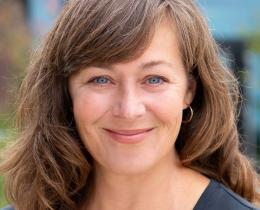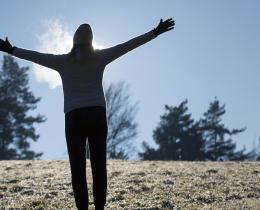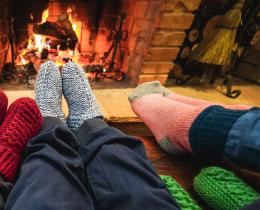We went back and forth over the title of my book Dynamic Aging. Aging is a term often applied to older generations, but the fact of the matter is we’re all aging, from the day we’re born. Aging is an inevitable part of life, and it doesn’t indicate anything other than the fact that our time and experience are constantly accumulating—which is truly a gift.
Dynamic aging, though—that is something else entirely. Dynamic aging requires movement.
Dynamic aging is the acquisition of time and experience alongside the acquisition of physical skill. While we’re all aging, we’re not all aging dynamically, for this requires that we move.
A Lack of Exercise Affects All Parts of Your Body
Our tissues do change with age, but they also change through lack of movement. When you couple older tissues with a longer habit of not moving much (which we all have; it’s very easy to get by in our culture with very little movement), you wind up with a body that feels unable to go out and gather the experiences of life you desire.
Our culture’s perspective is that this decline in movement is related to aging, but I want to stress again that our culture is sedentary. All of us in our culture have spent the bulk of our lives unmoving and so the transformative effects of movement are rarely considered as being integral to all aspects of life, including aging.
That all being said, most scientists and medical professionals will tell you that you need to start exercising, because research shows just how protective of health this can be. However, exercise time is typically allotted to a tiny fraction of each day. If movement is hugely transformative, why not learn to put the movement, beyond exercise, back into each day?
We are used to thinking of exercise as something we do “outside” the obligations of our regular life. Thus our obligations keep us from moving abundantly through life because our families and jobs and community work and housework take our attention.
Exercise is a great asset, but few have the luxury of bumping up their exercise time to three or four hours each day. You can, however, get your body moving closer to that amount by setting your life up in a way that requires more movement.
Our bodies require movement—a lot of it—to operate fully. This is the reason exercise is almost always listed as beneficial for health issues. And it’s not only the muscles and joints that movement protects.
A lack of exercise can affect the health of your eyes (and thus vision), brain (cognition and memory), and digestion; it can negatively impact your energy levels, lipid panel results, and simply how good you feel each day. And a lack of exercise could be causing your cells to age faster.
According to one researcher of the effect of diet and movement on aging: “Some of us believe that aging is just something that happens to all of us and it’s just a predestined fate, and by the time I turn 65 or 70 or 80, I will have Alzheimer’s disease and cardiovascular disease and osteoporosis,” says Dr. LeBrasseur. “And this [study] clearly shows the importance of modifiable factors, so healthy diet, and even more so, just the importance of regular physical activity. So that doesn’t mean that we need to be marathon runners, but we need to find ways to increase our habitual activity levels to stay healthy and prevent processes that drive aging and aging-related diseases.”
Age-Related Disease Begins in Our Cells
But how is it that we can age faster?
Each of your cells has a limited number of times it can divide; this is why our bodies don’t last forever. The number of times your cells can divide is determined by the rate of loss of the protective caps (called telomeres) of each chromosome at each cell division.
Once a cell has stopped dividing, it becomes what is termed a “senescent” cell. Senescent cells are still active, but are associated with the production of inflammatory molecules and contribute to many age-related diseases.
The possible number of cell divisions we experience is not a fixed amount but rather a range that varies (adults range between 50-70 divisions). Although we all accumulate days at the same rate, our cells are not all dividing at the same rate, and also the amount of telomere DNA lost at each cell division is not the same—which means two people of the same chronological age could have a different biological age, each having a different number of cellular divisions remaining before their cells become senescent.
Movement matters to your body on the cellular level. And so, instead of writing “here are safe exercises for seniors,” I want to say loud and clear that there are daily movements available—at every age—that focus on the dynamic part of aging.
Movements that not only put movement back into your life, but life into your cells. And in the end, this is the reason I’ve spent my life writing and teaching about why movement needs to play a large role in our life. It’s not so that we can age dynamically, but so that we can live dynamically.




